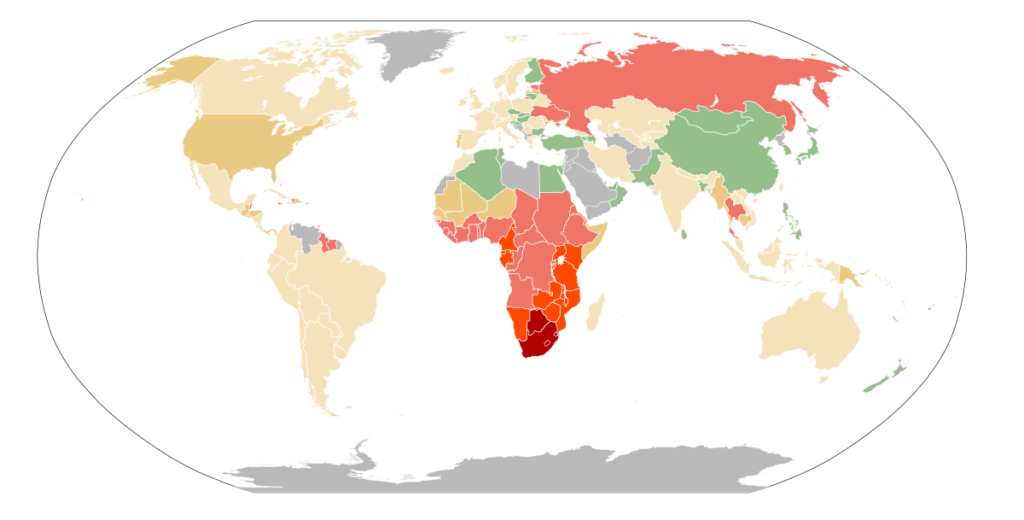HIV Infection Got Cured In A Second Patient In The History Of Medicine

By Neucrad health’s own news desk March 15, 2019
In March 2019 HIV infection got cured for the second time in the history of Medical Science, which is a rare achievement in the global AIDS epidemic. Scientists were successful in achieving this milestone after a long gap of 12 years in a ‘London Patient’. Researchers published this rare feat in the reputed Nature Journal and presented every detail about the case at a Conference on Retroviruses and Opportunistic Infections in Seattle. Though Scientists are terming this case as a long-term remission, most experts are calling it a ‘cure of HIV infection’.
How Doctors Cured HIV Infection in the ‘London Patient’?
The bone marrow transplants were from a donor with a mutation in a protein called CCR5. Mutated CCR5 prevent HIV virus to enter those cells. Ultimately, it did not allow any progression of HIV infection helped in achieving this medical science milestone. After approximately eighteen months of antiretroviral therapy (ART) physicians have confirmed there is no trace of HIV in ‘the London Patient’.
What is HIV?
HIV or human immunodeficiency virus is a deadly pathogen which leads to the development of acquired immunodeficiency syndrome or AIDS if patients do not undergo treatment. Unlike other pathogens, it is very challenging to get rid of HIV once they enter the body. So, in most of the cases, physicians state that if you have an HIV infection, it would be in your body for a lifetime. HIV transmits from infected patients to healthy individuals through blood, breast milk, semen, vaginal and rectal fluid.
What does HIV do After Entering the Human Body?
HIV specifically attack the human immune system. They target CD4 cells or T cells which fights off infections. If patients do not undergo proper treatment after HIV infection, with time the number of CD4 cells reduces making individuals more susceptible to other diseases and cancers. In the meantime, opportunistic pathogens take advantage of a fragile immune system, and patients reach the last stage of HIV infection or AIDS. Currently, the situation is so threatening that in 2017, there were approximately 36.9 million HIV patients all over the world. Life-expectancy of most of these AIDS patients is only three years.
What are the Different Stages of HIV infection?
If HIV patients do not receive any treatment, then they proceed through three stages of the infection. Detailed below are the different phases of HIV infection.
Stage 1: Acute HIV infection
The first stage of HIV infection occurs within 2 to 4 weeks after coming in contact with the virus. Patients may show flu-like symptoms which is the body’s natural response to the pathogen. This stage is known as acute HIV infection, and their blood film shows a large amount of the pathogen. Patients are often unaware of HIV infection in this stage.
Stage 2: Clinical latency (HIV inactivity or dormancy)
The second stage of HIV infection is known as clinical latency period or HIV inactive period. In this stage, HIV is active within the patient’s body; however, since they reproduce very slowly, there is hardly any symptoms of the disease. If individuals take medicines (antiretroviral therapy, ART) for HIV infection, this stage can last for several decades. HIV remain suppressed within the patient’s body in clinical latency stage.
Stage 3: Acquired immunodeficiency syndrome (AIDS)
The third or the final stage of HIV infection is AIDS. Here patients have weakened the immune system, and they can acquire any bacterial or viral infections very easily. Individuals become susceptible to opportunistic illnesses. CD4 cell count reduces to below 200 cells per cubic millimetre in this stage, while that of healthy people is about 500 to 1,500 cells per cubic millimetre.
What are the Tests for HIV Infection?
Doctors usually prescribe many tests for the detection of HIV infection. Antibody/antigen test, OraQuick HIV Test, and Nucleic acid test (NAT) are few important diagnostic procedures for the confirmation of HIV infection.
Finally, we can say, a cure for HIV is a breakthrough milestone in the field of Medical Science. Patients all over the world are eagerly waiting for more extensive incorporation of ‘bone marrow transplantation’ therapy for healing the deadly disease.
Image credit: AIDS and HIV prevalence 2008.svg: Escondites, public domain







